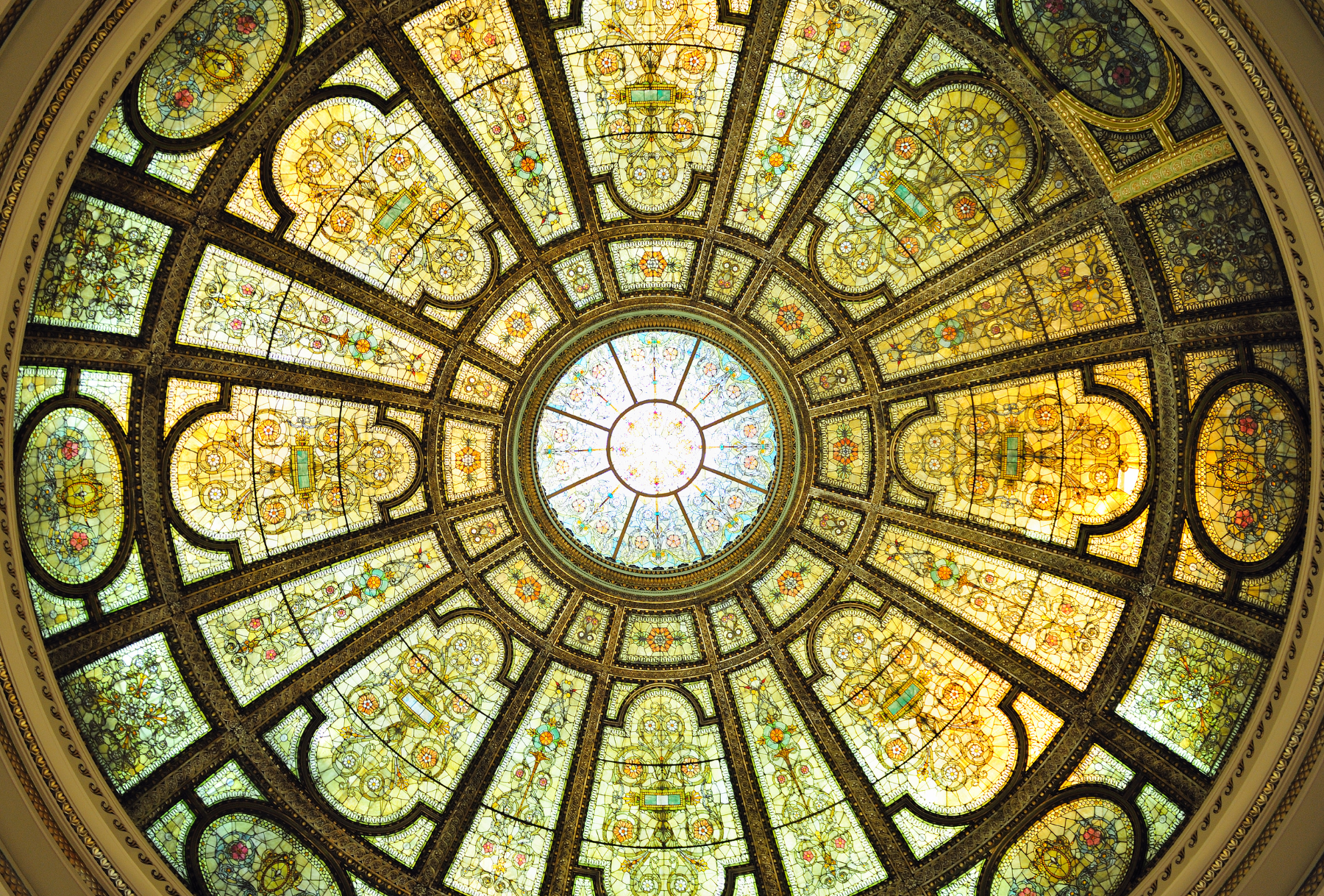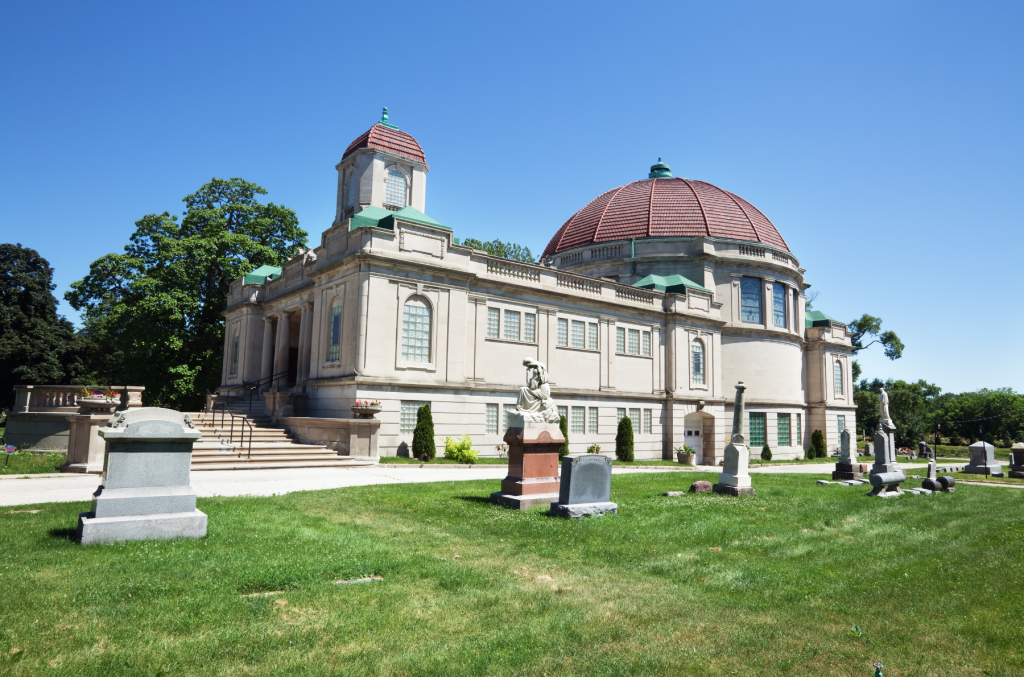
Chicago’s War Memorials
Published on May 16, 2024
In Daley Plaza on the Dearborn St. side lives an eternal flame that has burned since Aug. 22nd, 1972. It’s dedicated to the “memory of the men and women who have served in our Armed Forces from the Revolutionary War to present. Army, Marines, Navy, Air Force, Coast Guard, National Guard, Reserves and Merchant Marines.” It’s one of many tributes to veterans’ sacrifices that can be found throughout Chicago.
By Dave Lifton (@daveeatschicago)
The southeastern corner of the DuSable Bridge contains Defense, a bas-relief sculpture depicting a scene from the Battle of Fort Dearborn, an encounter on Aug. 15th, 1812 where evacuating federal troops were overwhelmed in 15 minutes by the Potawatomi. Bronze plaques outlining the former site of the fort can be found on all four corners of the intersection of Michigan Ave. and Wacker Dr.
Several of Chicago’s cemeteries have war memorials. Uptown’s St. Boniface honors those of German ancestry who fought for the Union in the Civil War, as does Bohemian National Cemetery, where you can also see tributes to Czech-Americans who served in the Spanish-American War. This memorial to veterans of the First and Second World Wars will be rededicated in 2024 following a year-long restoration.

A section of Rosehill Cemetery is devoted to the Civil War, including the Soldiers & Sailors Monument, Battery A Chicago Light Artillery Monument and a plaque dedicated to Union soldiers. On the South Side, Oak Woods Cemetery has the Confederate Mound for the more-than 6,000 men who died while imprisoned at Camp Douglas in what is now Bronzeville.
Arguably, Chicago’s most beautiful war memorial is the Grand Army of the Republic Rotunda and Hall on the second floor of the Chicago Cultural Center. Built as a meeting space for Union veterans, the rotunda is topped by a 40-foot-wide stained-glass dome and the hall behind it contains the names of 30 major Civil War battles in chronological order above the doors.
Two of Chicago’s most famous landmarks were renamed after World War I to honor the military. In 1925, Grant Park Stadium was rechristened as Soldier Field and E.M. Viquesney’s “Spirit of the American Doughboy” now sits inside Gate O as a tribute to the infantrymen who fought in World War I. Two years later, Municipal Pier No. 2, which served as a naval training center and barracks, as well as a prison for draft dodgers, became Navy Pier.
Another doughboy is in Bronzeville at 3500 S. Martin Luther King Dr. He stands atop Leonard Crunelle’s Victory Monument, which honors the Black Illinois National Guardsmen who served in France, with the 137 members of the regiment who were killed in action. Other World War I memorials can be spotted in Andersonville, Edison Park, and West Pullman.
Chicago has tributes great and small to those who served in World War II. After the State Street Bridge was completed in 1949, it was dedicated to the Chicagoans who fought at Bataan and Corredigor in the Philippines in 1942. It was rededicated in 1998 to recognize all American and Filipino veterans of those battles.

The importance of the Battle of Midway led to Chicago Municipal Airport being renamed in its honor in 1949, and an exhibit that includes a Douglas SBD Dauntless dive bomber is located at Concourse A. Midway also has a glass mural commemorating the Tuskegee Airmen, the group of Black pilots who flew with distinction, at the south end of the Ticketing Hall.
On W. 26th St., The Manuel Pérez Jr. Memorial Plaza was dedicated in 1981 to commemorate a Mexican American from Little Village who was awarded the Congressional Medal of Honor for his heroism in the Battle of Luzon in the Philippines, but was killed a month later, before he could receive his medal. Three years ago, on Veterans a mural honoring Pérez’s life and service was unveiled in the park.
West Rogers Park is home to another Viquesney work, “The Spirit of the Fighting Yank,” a bronze-plated zinc statue of a soldier as he prepares to hurl a grenade. Two miles away, in Sauganash, a memorial lists the names of those from Sauganash who served in World War II, and a plaque was added later to incorporate the Korean and Vietnam Wars.
Another recent tribute to World War II is found near the east end of the Riverwalk. The sculpture is dedicated to all U.S. submariners—past, present, and future—and the 28 submarines that traveled through the Chicago River en route from Manitowoc, Wisc., to the Gulf of Mexico for use in the Pacific Theater.
The Riverwalk is also home to the Vietnam Veterans Memorial, located between Wabash Ave. and State St. On a wall below Wacker Dr. are the words “Chicago Remembers” and the names of 2,936 Illinois residents killed in action, with a fountain in front of it. A restoration of the plaza was completed in March 2024.
We at eATLAS thank all those who have served and sacrificed in our armed forces.

The Adventure starts when you say it does.
All eATLAS Adventures are designed and built by experienced eATLAS Whoa!Guides. They're always on. Always entertaining. And always ready to go.
Check out our Adventures!